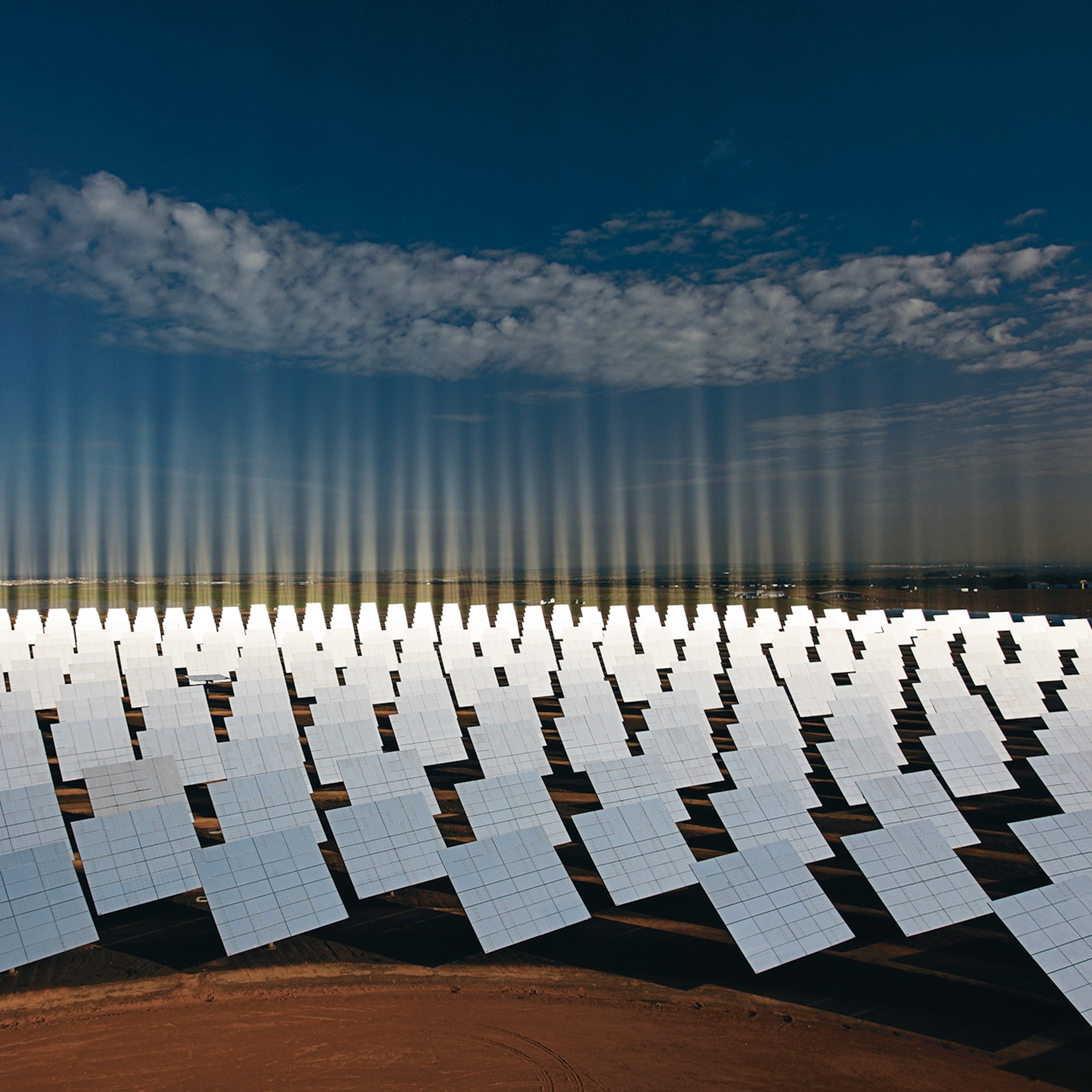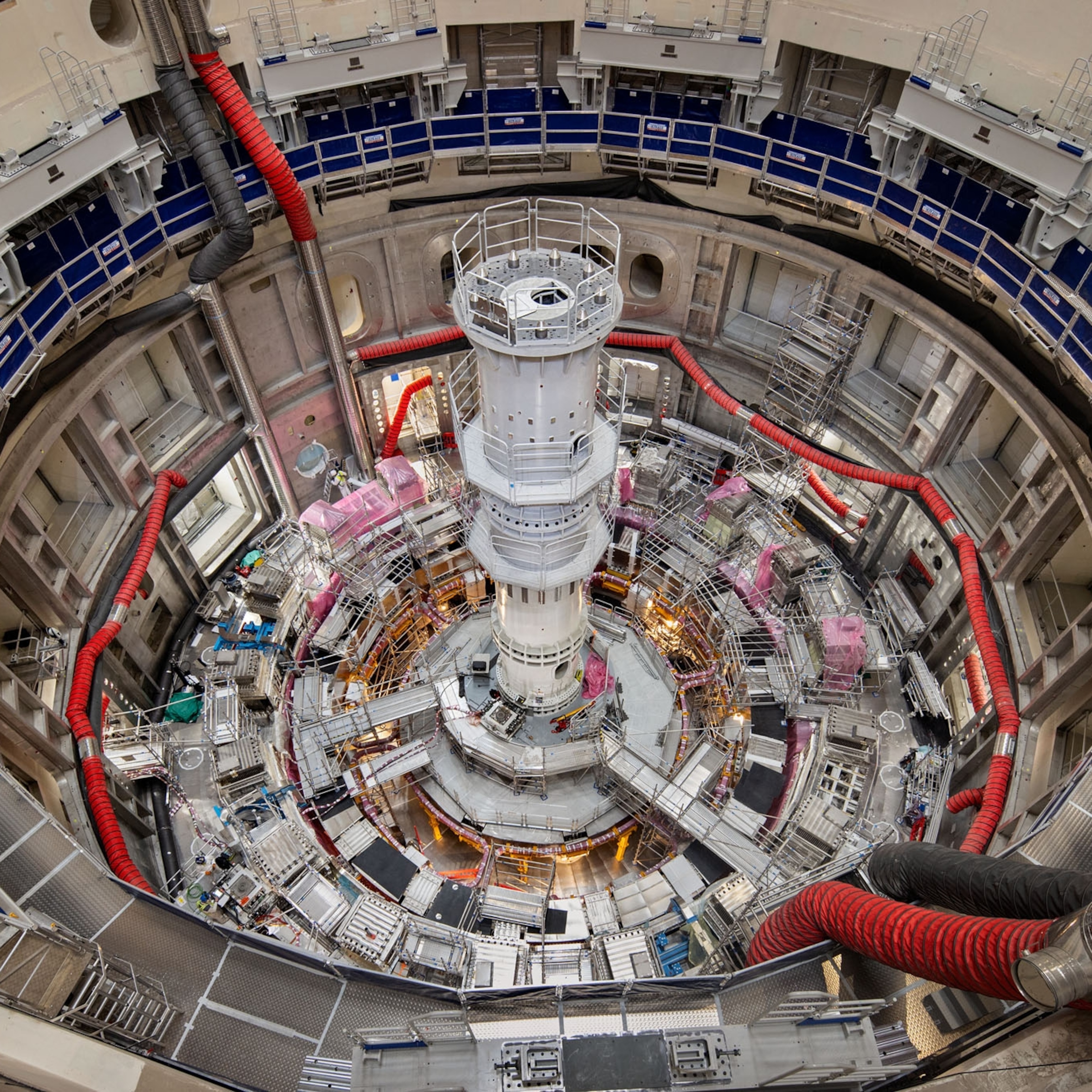Can China's coal capital transform itself into a solar mecca?
China consumes half the world's coal, and Shanxi Province is China's leading producer. It's also piloting the country's "energy revolution."

Datong, China — The sides of the roads surrounding this city in northern China are coated in a thick layer of coal dust. It falls off trucks hauling the black rocks to power plants, steel factories, and chemical plants across the nation. Here in Shanxi, the largest coal-producing province in a country that accounts for half the world’s coal burning, mines have been dug under one-eighth of the land’s surface.
Yet the landscape in Shanxi is changing. Since a 250-acre solar power plant shaped like a panda opened five years ago, the hills around Datong, Shanxi’s coal-mining center, have been blanketed with solar panels. Solar capacity in the province has been expanding at 63 percent per year, wind power at 24 percent. Seemingly everywhere one looks outside Datong there are either mines or expanses of solar panels, sometimes in quick succession.
The striking alternation illustrates Shanxi’s latest role: China has tasked its coal powerhouse with modeling the transition to clean energy. Besides building out clean energy sources—including in particular the infrastructure to use hydrogen as a fuel—the province is supposed to conduct large-scale tests for upgrading factories and power plants and retraining fossil-fuel workers.

In general, it is supposed to figure out, for itself and China, how to rid itself of its reliance on coal.
President Xi Jinping announced last year that China’s coal use would peak by 2025. But so far there is no national roadmap for how to phase it out—even though ending coal burning is essential for meeting the country’s commitment under the Paris Agreement to peak its total carbon emissions by 2030 and to become carbon neutral by 2060. In its latest assessment report, released earlier this month, the Intergovernmental Panel on Climate Change (IPCC) said the world must phase out coal completely by 2050 in order to limit warming to 1.5 degrees Celsius (2.7 degrees Fahrenheit).
Thus a lot is riding, for China and the world, on the success of the pilot project now underway in Shanxi. Local officials, feeling the pressure, whisper about how Beijing expects their offices to make strides on climate goals but offers little oversight or funding.
For all the country’s progress at building out renewables, it seems it has yet to commit to the investments needed to meet its commitment to reduce emissions.
“Shanxi is one of China's most coal-dependent provinces and responsible for the largest increase in CO2 emissions in recent years among Chinese provinces, so I don't think it's realistic for Shanxi to become a model to copy,” says Lauri Myllyvirta, lead analyst on air pollution and climate at the Center for Research on Energy and Clean Air, an independent research organization with a strong focus on China. “Rather, my hope would be that the province will find a way to peak and decline its own emissions well ahead of the 2030 deadline.”
Coal is still king
Over the past 40 years China has built the world’s largest industrial sector and export economy based on power from coal. Chinese officials sometimes call it the economy’s “ballast stone.”
Although in the past few years the country has also become the world’s largest investor in renewable energy, renewables such as wind, solar, and hydropower cumulatively account for only about 28 percent of its electricity generation—and a much smaller percentage of its total energy consumption. Coal still takes the lion’s share, producing more than 60 percent of both electricity and total energy.
Last year, coal burning in China set another record, increasing 4.6 percent as the economy roared back after the COVID lockdowns of 2020. A very hot summer and floods in coal-mining areas put unexpected pressures on the energy system, leading to blackouts last fall across the nation.
Beijing responded in part by ordering mines to ramp up coal production. That has meant Shanxi has had to dig out more coal than before even while piloting the “energy revolution.”
“The pressure on various provincial and local governments is enormous,” says Cheng Zhang, president of Shanxi Energy Research Association, a government think tank involved in policy planning.
“The recent energy crisis hasn’t helped with the dynamics of getting rid of coal faster,” says Byford Tsang, a senior policy advisor on climate who leads the China operations at E3G, a think tank focused on climate change globally.
Leaders in Beijing are unwilling to risk the country’s energy security or continued economic growth, which is a source of popular legitimacy to the ruling Communist Party. Climate commitments, important as they may be, are not at the top of the priority list.
“Growth is the main theme,” says Li Shuo, a senior climate and energy policy officer for Greenpeace East Asia. “Decarbonization is still an afterthought.”
Decarbonization, however, happens to align with China’s long-term plans to reduce the economy’s reliance on heavy industry and infrastructure and instead base it on services and consumption. Energy intensity per unit of GDP—a key indicator of how polluting an economy is—started dropping in the mid 2010s.
But worryingly for climate experts, it’s still about three times the world average, and it has been declining more slowly since 2017, as the country has reverted to building infrastructure and ramping up exports in order to bolster the economy.
“At the end of the day, it goes back to the macroeconomic aspect, which is to what extent and how fast can the country manage a transition toward a less energy-heavy, industry-intensive economy?” Li says. “So essentially, how fast can we create jobs elsewhere?”
Miners want to mine
In many families in China’s coal-mining heartland, three generations of men have earned their living in the mines. In 2018, 46 percent of Shanxi’s tax revenue came from coal-related industries, while in Datong, more than one in 10 people work in coal mining. In the city’s miner housing neighborhoods, imagining a future without coal is a tall order.
“Datong city relies on coal,” says Cao Hongji, a 52-year-old retired machinery worker who spent 30 years working in coal mines around Datong.
“Without coal, how can people consume in restaurants, in malls, in homes?” he says. Cao lives in Heng’an New District, a neighborhood where shopping malls with colorful neon signs line the roads and where coal-mining enterprises own entire apartment complexes. Workers buy subsidized apartments here for as little as 50,000 yuan ($8,000).

Miners take pride in the difficulties of their work—you can recognize front-line diggers, they say, by the fact that at the end of a shift only their teeth are clean. Miners readily talk about how their lives have gotten better over the years. Coal mine accidents happen less often now, since safety standards have been improved and smaller, private mines have been closed or consolidated into state-owned behemoths.
“From going down into the mines to the working environment aspect, everything is improving,” says a miner who only wanted to share his surname, Tang. He has worked at Datong’s No. 2 mine for 20 years and says he expects to do so until retirement.
China’s overall employment in the coal sector dropped by 46 percent between 2013 and 2019, but more layoffs are expected after the coal peaking deadline of 2025. Shanxi doesn’t have a concrete plan yet for how it will transition workers to other industries. Large-scale retraining hasn’t begun.
Banking on hydrogen
Shanxi and China are banking on one key strategy to manage the transition from coal to renewables: They’re investing massively in hydrogen. Shanxi is to develop a full industrial chain for producing, storing, transporting, and burning the stuff, according to official plans.
Worldwide, hydrogen is just beginning to be widely used, and it’s controversial. While it burns cleanly, emitting only water and no carbon dioxide, the way hydrogen is produced usually isn’t clean or carbon-free.
“Green hydrogen” can be made by using renewable electricity to split water molecules, but most hydrogen, in China and elsewhere, is still extracted from fossil fuels. As the world transitions to greener energy, it’s often fossil fuel companies that push hydrogen as a way of maintaining their relevance, says Cory Combs, a senior analyst on climate and energy with Trivium China, a think tank focused on China’s economy.
That is essentially what Shanxi is doing: The province wants to make hydrogen out of coal. Datong is gearing up to build at least three hydrogen production plants, a couple of dozen hydrogen refueling stations and up to five hydrogen-based power plants.
Burning hydrogen that has been made by gasifying coal is less energy efficient than burning coal directly for power, and unless the carbon is captured at the smokestack, it’s also polluting. But the process is touted by Chinese officials as an intermediary step for using coal and propping up the coal industry while local governments expand renewables and eventually transition to carbon-free hydrogen.
China’s top economic planner last month set a target to produce up to 200,000 tons per year of green hydrogen and have about 50,000 hydrogen-fueled vehicles by 2025—a tiny fraction of the market in China, where more than 26 million cars were sold last year.
“Hydrogen will fill up the gaps in industrial activity, employment, tax revenue, etc., left by coal as a leading industry,” Cheng says. The government’s plan, he explains, is not to get rid of coal but to “evolve out of being dependent on it.” The aim is to transform Shanxi “from a piece of coal into a shard of intelligence.”
More money needed
Will China meet its global commitments to decarbonize? Many observers say that because President Xi himself personally announced the targets for peaking coal and emissions and reaching carbon neutrality, this means they are politically non-negotiable and will get done.
What would help China move faster toward its climate goals would be an infusion of cash in renewables and industrial upgrades. Data collected by the Shanxi Energy Research Association from other energy-focused pilot projects across China suggest that to peak carbon emissions by 2030, the nationwide annual capital needs are 3.1 to 3.6 trillion yuan ($487 billion to $565 billion). The current allocated capital is only around 526 billion yuan ($82.6 billion) annually—less than a fifth of what’s needed, according to the Shanxi researchers.
To achieve carbon neutrality by 2060, China would need to invest more than 139 trillion yuan ($22 trillion) in areas such as clean power generation, advanced energy storage, and zero-carbon buildings.
Renewables will continue to expand in China because major state-owned enterprises in the power sector are allocated quotas for renewable energy generation, which forces them to deliver.
But there is no national plan for how to fill the gap in investment, and no amount of experimentation in Shanxi can provide that. So whereas China is making progress in transitioning to cleaner energy sources through various policies and local and regional experiments, its success in meeting its climate commitments might depend on the sheer amount of cash put in.








